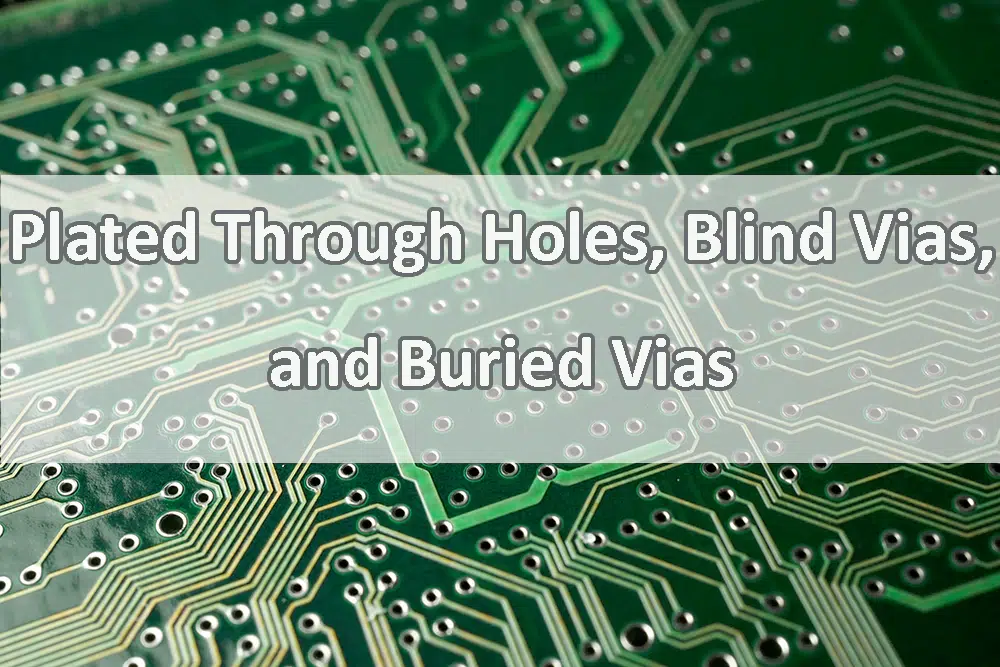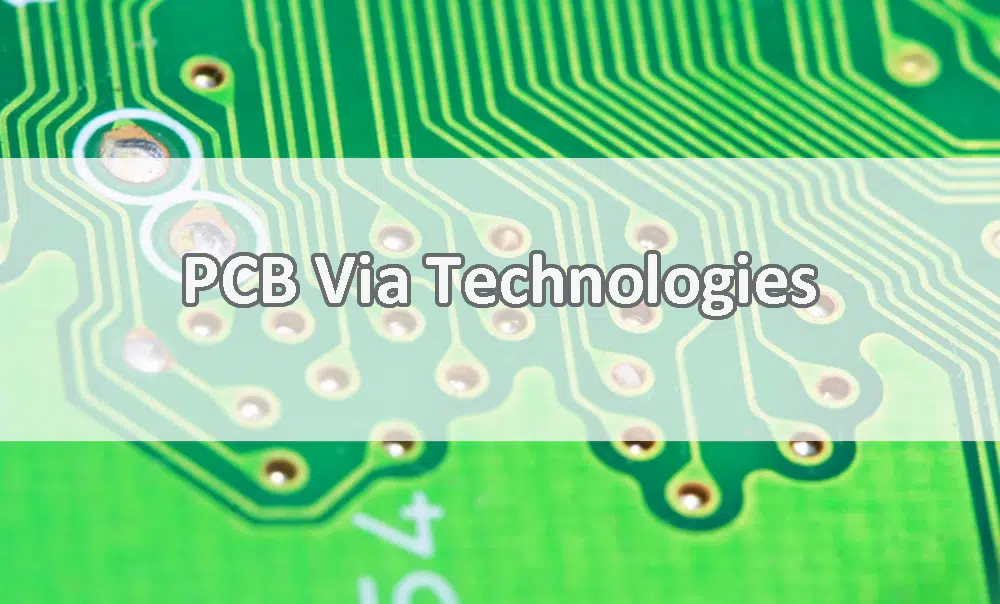Printed Circuit Boards (PCBs) are the backbone of modern electronics, facilitating the connection and communication between various electronic components. Within the intricate landscape of PCB design and manufacturing, via technologies play a crucial role in enabling complex circuits and optimizing space utilization.
Among the myriad of via types, three prominent variants stand out: Plated Through Holes (PTHs), Blind Vias, and Buried Vias. Each serves distinct purposes, catering to the specific needs of diverse applications.
Plated Through Holes (PTHs)
Plated Through Holes, often referred to simply as through-holes, represent the fundamental via technology in PCBs. These holes traverse the entire thickness of the PCB, connecting conductive layers from one side to the other. PTHs are created by drilling holes through the substrate material and then depositing conductive material, typically copper, inside the holes through a process called electroplating.
One of the primary functions of PTHs is to establish electrical connections between different layers of the PCB. Components such as resistors, capacitors, and integrated circuits can be soldered into PTHs, enabling them to make electrical contact with the conductive traces on multiple layers of the board. This allows for the creation of complex circuit architectures while maintaining a compact form factor.
The robust nature of PTHs makes them suitable for applications requiring high mechanical strength and reliability. They can withstand thermal cycling and mechanical stresses, making them ideal for use in rugged environments where durability is paramount. However, PTHs also pose certain limitations, such as increased fabrication complexity and potential signal integrity issues in high-speed circuits due to their longer signal paths.
Blind Vias
Blind Vias represent a more specialized form of via technology that provides connections between the outer layers of a PCB and one or more inner layers, without penetrating the entire board thickness. Unlike PTHs, blind vias are drilled from one side of the board only, terminating at a specific depth within the substrate.
Blind vias are particularly advantageous in scenarios where space is limited, or when specific signal paths need to be established between specific layers of the PCB. By selectively routing signals through blind vias, designers can reduce signal distortion and improve signal integrity, especially in high-speed digital and RF applications.
The fabrication process for blind vias involves precise drilling and plating techniques to ensure accurate alignment and reliable electrical connections. While blind vias offer significant benefits in terms of space savings and signal performance, they also introduce challenges such as increased manufacturing complexity and higher costs compared to traditional PTHs.
Buried Vias
Buried Vias represent a further evolution in via technology, providing interconnections between inner layers of a multilayer PCB without extending to the outer layers. Unlike blind vias, which connect to at least one outer layer, buried vias exist entirely within the internal layers of the PCB substrate.
The primary advantage of buried vias lies in their ability to enhance PCB density and signal routing flexibility without impacting the outer layer circuitry. By routing signals through buried vias, designers can achieve higher interconnect densities and optimize signal paths, leading to improved performance and reduced electromagnetic interference (EMI).
However, the implementation of buried vias presents significant challenges during PCB fabrication, including precise drilling and plating processes within the inner layers of the board. Additionally, accessing and repairing buried vias can be problematic, as they are concealed beneath layers of substrate material.
What’s the difference between Plating Through Hole , Blind Via Hole and Buried hole?
Plating Through Hole (PTH), Blind Via Hole, and Buried Hole are all terms commonly used in the context of printed circuit board (PCB) manufacturing. Each refers to a specific type of hole used in PCBs, but they serve different purposes and have distinct characteristics:
Plated Through Hole (PTH):
A PTH is a hole that goes completely through a PCB, from one side to the other.
These holes are typically used for interconnecting different layers of the PCB.
PTHs have conductive plating lining the inside of the hole, which allows for electrical connections to be made between different layers of the board.
Blind Via Hole:
A Blind Via Hole is a hole that connects one or more inner layers of a multilayer PCB to the outer layer(s), but it does not go all the way through the entire board.
Blind vias are used when connections need to be made between layers that are not adjacent to each other.
These holes are typically drilled from one side of the board only, and they do not penetrate through the entire thickness of the PCB.
Blind vias are useful for reducing signal distortion and improving signal integrity in high-speed circuits.
Buried Hole:
A Buried Hole is a hole that exists entirely within the inner layers of a multilayer PCB and does not extend to the outer layers.
Unlike blind vias, buried vias do not connect to the outer layers of the PCB.
Buried vias are used when interconnections are required between inner layers of the PCB but without impacting the outer layer circuitry.
They are often used to increase the density of interconnections in high-density PCB designs without adding additional layers to the board.
In summary, Plated Through Holes (PTHs) traverse the entire PCB, Blind Via Holes connect inner layers to outer layers without going all the way through, and Buried Holes are contained entirely within the inner layers of the PCB. Each serves different functions and is used in specific scenarios in PCB design and manufacturing.
Conclusion
Plated Through Holes, Blind Vias, and Buried Vias represent essential components of modern PCB design and manufacturing, each offering unique advantages and challenges. While PTHs provide robust interconnections between different layers of the board, blind vias and buried vias offer enhanced space utilization and signal integrity benefits. By understanding the capabilities and limitations of each via technology, designers can make informed decisions to optimize the performance, reliability, and manufacturability of their PCB designs, driving innovation in the ever-evolving field of electronics.












